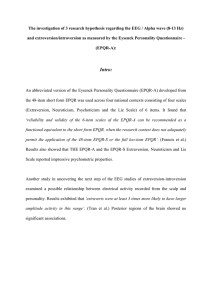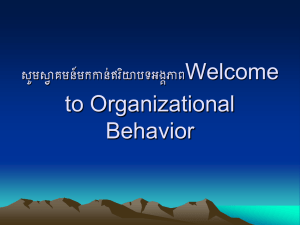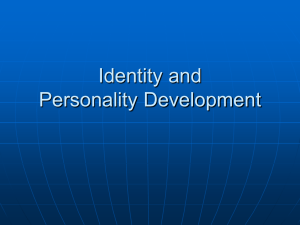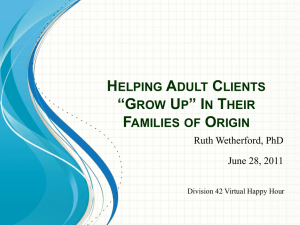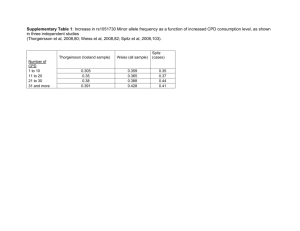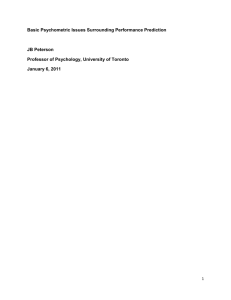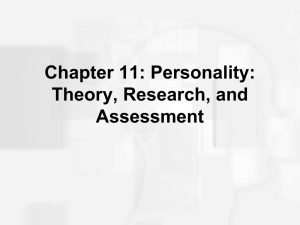Early Adulthood: 24-34
advertisement
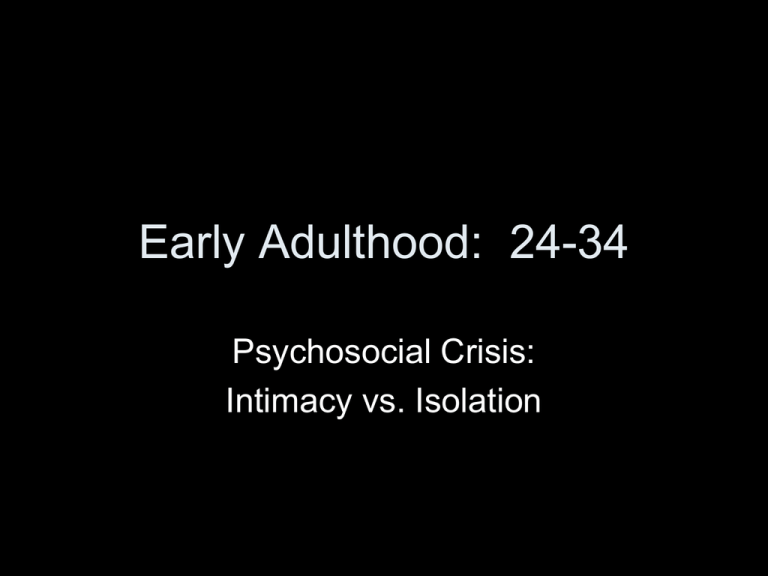
Early Adulthood: 24-34 Psychosocial Crisis: Intimacy vs. Isolation Test Review • Early school age – Sexual identity – 5 continua • Middle childhood – Cognitive development – info processing, memory – Definitions of intelligence – Sternberg, Gardner, Fluid and Crystallized • Early adolescence • Relationship of physical change, social context, cognitive process, emotional effect, behavior • Later adolescence – Identity – Marcia – Identity - Public, private, content evaluation – Idea of cultural/white identity development Developmental Tasks Taking action on the psychological commitments of later adolescence: • Intimate relationships • Decisions re: kids • Work/career • Lifestyle Consider your auto/biography subject in early adulthood • What is important to her/him? • Where is he/she as far as one or two of the developmental tasks. – “Committed?” – In transition? – “Stable?” • How did he or she arrive at this point? What has influenced her/him? • In general, what would you say are the significant developmental influences? Theories of influence: Why do we do what we do? • Personality Trait Theory– Outofservice.com • Fulfillment Theories • Social Role Theory Trait theory of personality • A definition of personality: The consistent pattern of behavior, thought and emotion a person exhibits across situations. • The Big 5 – Extraversion….Intraversion – Emotional stability….Neuroticism – Openness to experience….Closed to exp. – Agreeableness….Contentiousness – Conscientiousness….Carelessness *** Which of your observations of “your person” reflect personality? Some patterns • Conscientiousness and agreeableness increase in adulthood • Neuroticism decreases in women over time • Openness shows mixed results • Extraversion tends to stay the same Personality and burnout • 80 volunteers-75 women, 5 men • Working with terminal patients • Burnout defined: – Emotional exhaustion – Depersonalization – Reduced feeling of personal accomplishment Some correlations • High neuroticism linked with more depersonalization and emotional exhaustion • High neuroticism linked with avoidance (as opposed to approach) as a coping mechanism • High extraversion linked with less burnout • Agreeableness linked with feeling personal accomplishment when under stress Fulfillment Theories • Competence-motivated by desire to achieve mastery. • Self-acceptance-motivated to fully accept and value oneself and others. • Self actualization-motivated by the desire to fulfill one’s potential. **Which observations reflect these motivations? Social Role TheoryBasic Concepts 1. Social role 2. Role enactment 3. Role expectations 4. Role gain 5. Role strain 6. Role conflict 7. Role loss ***How are these concepts relevant to “your person?” Focus on consummate love relationships • Operationally define a satisfying, committed, romantic relationship. • What is it about the people or the circumstances that make a healthy relationship possible? Consider personality, social roles, fulfillment theory, attachment… Attachment Style & Relationship Formation Others Positive Negative Self Positive Higher s-e Negative Lower s-e Secure – emotional intimacy is easy, safe, interdependence is desirable Dismissing Avoidant – no need or desire for intimacy, prefers independence, freedom from others’ needs Preoccupied – Fearful Avoidant – needy, desires wants intimacy but complete intimacy is uneasy, trust is difficult Other research shows… • Attachment in adulthood – Secure-50+% • Happy and confident about future of relationship – Avoidant-25% • Less invested in relationships, higher break-up rates, loneliness – Ambivalent-20% • Over invested, repeated break-ups with same person, low s-e Get to work! Your task: To develop an assessment tool or activity that will help people examine their relationship to: a. Determine if it is a healthy relationship worth continuing. or b. Determine what needs to happen to improve their relationship. 1. In your group review figure 11.3, “The Mate Selection Process” and figure 11.5, “Sternberg’s Triangle Theory of Love.” 2. Consider previous developmental stages and their relevance to finding love. 3. Use this information to develop an assessment tool that will help young adults reflect on and assess their consummate love relationship. 4. Report back: • • • A description of your assessment tool. The rationale behind it. When/why you would recommend its use.
